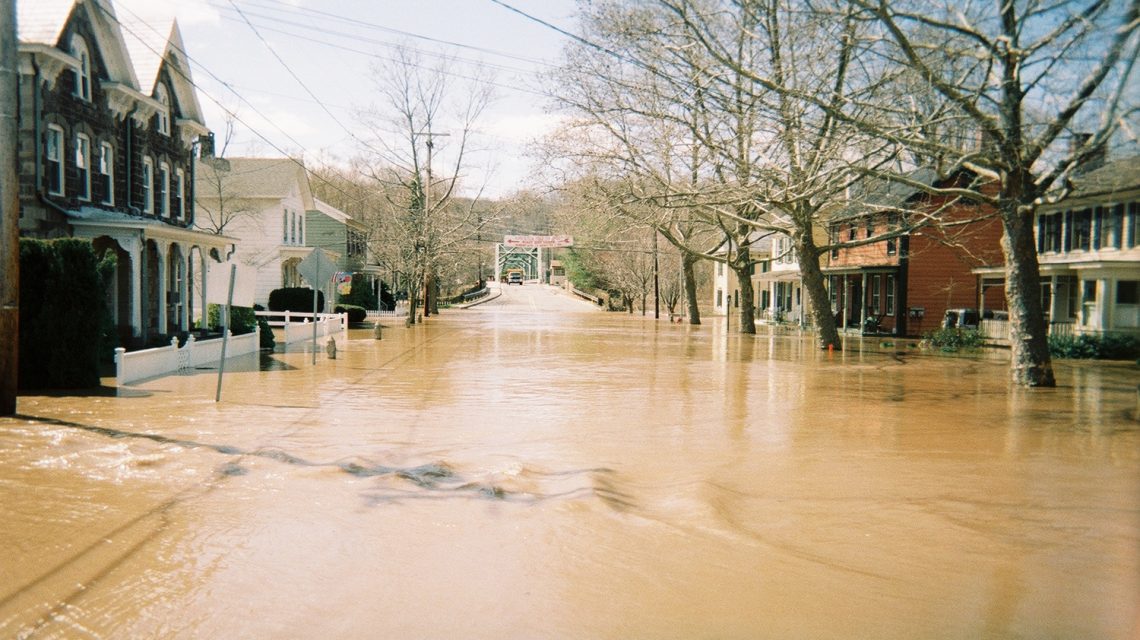To Stop the Cycle of Devastation, We Need to Change the Response
by Maya K. van Rossum, Author of “The Green Amendment: Securing Our Right to a Healthy Environment” and Executive Director of the Delaware Riverkeeper Network
An exhausted-looking woman walked into the government meeting with a well-worn shoe box, which she gingerly placed on the table. It was 2005. She owned a home in the floodplain of the Delaware River, which had just suffered from one of the worst floods in its recorded history. When her chance to speak came, the tired but determined woman shook with emotion:
My home is amongst those that suffered in the recent floods. This is all I have left of my family memories, this small shoe box of photos. Everything else was lost in the flood. Whatever decisions you make, you have to help me and others like me rebuild my home.
The reaction from elected officials to the woman with the shoe box? A very quick, “we will help you rebuild.”
There was no thought about the safety and expense of rebuilding in the floodplain along a major River that would flood again. Nor was any consideration given to taxpayers who had already paid to rebuild these homes—some of them multiple times.
Sure enough, the next major flood along the Delaware came the following year to the very same communities that had been working so hard to recover and for which so much time, money, and emotion had been invested.
In 2004, 2005, and 2006, three catastrophic floods on the Delaware inflicted over $200 million in damages. Of the 6,000 claims to the National Flood Insurance Program, many came from the 3,300 repetitive loss properties in the Delaware River watershed—properties that had been damaged in the past by floods.
This scenario plays out in communities across America. Of the 5.3 million properties that have policies through the National Flood Insurance Program, approximately 160,000 of them have suffered repeated damage and repeated payouts from the program. In fact, 25 to 30 percent of all flood insurance claim payouts are to properties that have suffered repeated damage in storms. It is not uncommon for cumulative payouts from the National Flood Insurance Program to exceed the actual value of a home.
One property located in North Topsail Beach, North Carolina, has received 9 payouts totaling $77,000 for a property only worth $37,125. A Baton Rouge property worth $55,921 has received 40 payouts from the program totaling $428,379—nearly 8 times the value of the home. Examples like these sadly abound.
Climate instability and attendant sea-level rise are only magnifying this failing approach. Floods are becoming more frequent, virulent, and expensive. Yet we routinely rebuild our homes in the same hazardous places, just as governments continue to approve and incentivize the construction of more fossil-fuel infrastructure, like power plants, pipelines, and drilling and fracking operations, which release methane, carbon dioxide, and other climate changing emissions, exacerbating the problem of flooding and other hazardous storm events.
But it doesn’t have to be this way.
Rather than using government funds to rebuild homes in the same dangerous places, funding should be used to purchase homes at market value, help residents move to safer ground, and to restore our floodplains and coastlines so they can provide the flood and storm protection that comes from such healthy natural systems.
Resilient clean energy technologies are another important part of the solution. During Superstorm Sandy millions lost power and traditional power generators and transmission technologies suffered severe and costly damage. Communities that used microgrids fueled by solar panels and clean energy options retained power. The damage to clean-energy infrastructure was much less than that to its fossil-fuel-powered counterparts. As Superstorm Sandy reminds us, clean energy reduces climate changing emissions, increases the likelihood of power to communities in the midst of a storm, and saves homes, money, and lives.
The National Flood Insurance Program (NFIP) is already over $20 billion in debt. We need our politicians to be both smart and brave. They need to focus on protection rather than politics and to recognize that there is a better path than the usual “we will help you rebuild in the same dangerous places and the same dangerous ways”. It is time for a fundamental change in how we help communities heal from the damage and be protected in the future.
Every time politicians blindly promise to help residents rebuild, I urge for programs to focus on market value buyouts, floodplain and coastline restoration, and clean energy investment so we can provide the much-needed flood protection for our communities and tremendous taxpayer savings for our nation. As we begin to reflect on the aftermath of Florence and all the recent storms, I plead for this saner strategy so that more families across the nation aren’t reduced to a shoe box of belongings and all the loss it represents.
I hope you will consider joining me in this call for change. Consider calling your member of Congress and urge needed NFIP reform.



